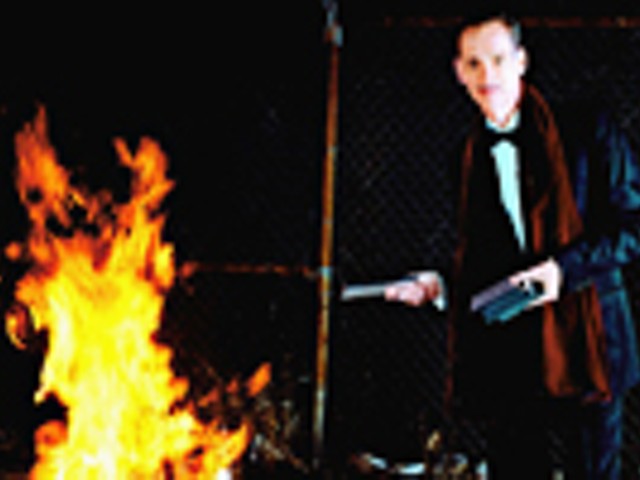"I've really been doing it for 40 years," the cult filmmaker from Baltimore says of the monologue, which he considers a good gig to have when he's not working full-time on a movie. "It's the one thing I can always do. It is like being a politician: I shake hands and hold babies."
The show traverses Waters' early artistic influences and his fascination with exploitation films and crime, and will contain at least one segment on religion.
"I just did it in London and Dublin. I always update it and change it," says the director with the trademark razor-thin moustache. "I try new material wherever I go."
After making his first films in the 1960s, Waters found cult stardom with the 1972 release of Pink Flamingos, which featured the late drag queen Divine and a plot involving heroin and hitchhikers. Subsequent works — such as Polyester, a 1981 movie that was "filmed in ODORAMA"; and Hairspray (1988), which addressed segregation in the 1960s via a television dance show — cemented Waters' reputation among the outré set. Hairspray's modest wide-release success paved the way for 1990's Cry-Baby, a love story (of sorts) starring Johnny Depp.
By 2002, when Hairspray was recast as a Broadway musical, Waters' appeal had long since crossed over into the mainstream. The high-water mark came last year, when the musical was made into a film starring John Travolta, Michelle Pfeiffer, Queen Latifah and Christopher Walken.
"The last time I went to a peep show I was in Las Vegas," the 62-year-old filmmaker recalls. "A guy yelled at me: "I've seen you on Letterman!" (Though he still sets all of his films in Baltimore, Waters now splits time at residences in San Francisco, New York and Provincetown, and continues to travel extensively. "I have a fear of not flying and staying home for the rest of my life," he says.)
Love them or hate them, Waters' movies and their unpredictable and absurdist edge brought a fair measure of critical appreciation. (They're nothing if not memorable: It's hard, after all, to erase the image of Divine eating dog shit at the end of Pink Flamingos.) And the filthy world of the filmmaker's imagination does not seem to have been born out of a sense of moral depravity. Rather, Waters says, he associates filth with a "certain kind of humor" in which even the hideous things he sees he can "look up to in wonder. To me, filth is the only world left," he says. "I don't make fun of people. I'm not a classicist. Being dumbfounded is a kind of respect.
"If somebody is cute enough, and a racist, can you sleep with them?" he posits, then answers himself in the affirmative: "You just change the subject about politics quickly. Talk dirty!"
Though William S. Burroughs dubbed him "the Pope of Trash," Waters aligns himself more with the Wicked Witch of the West in The Wizard of Oz: "The Wicked Witch says something to Dorothy like, 'How can you ruin all my beautiful wickedness?'" The beauty of his own dark side, Waters maintains, lies in the fact that it's not at all mean-spirited. "Everything I make fun of, I like," he says.
For Waters the distinction between art and entertainment is nonexistent. "I think art is entertaining to me if it really is art," he says. "I don't think they're enemies at all. Nobody should have to defend their tastes. Be proud of your tastes. Just because I don't agree with you doesn't mean you're wrong."
As for those who condemn him for his vulgarity, Waters says the publicity helps him reach a broader audience.
"It's amazing to me that censors haven't realized that if you want to censor something, don't talk about it. If you want to help it, say, 'Don't see it.'"
Waters' gallery works are an extension of his cinematic self, projected onto physical objects. One sculpture, Bad Director's Chair, is a stereotypical canvas-backed film director's chair, with the word "HACK" stenciled on where you'd expect to see "DIRECTOR." His photographic works are based around movie stills from a plethora of films, rearranged in a way that the story makes sense to him.
"I'm basically spying on other people's movies and redirecting them," he says. "I am trying to retell them with images of my own."
Waters is also diving into the world of literary publishing. A book about his role models, as yet untitled, is scheduled for release in coming months. It will include influences ranging from Tennessee Williams to Little Richard.
Whether he's greeted with torches or resounding applause in St. Louis, as long as he entertains, Waters says he will be happy.
"I don't expect everyone to like the things I like. I don't expect everyone to agree with me. If they laugh, they might consider changing their minds."





